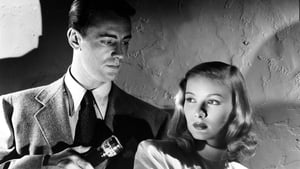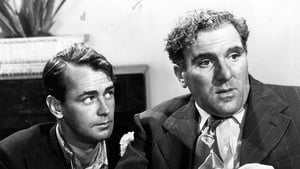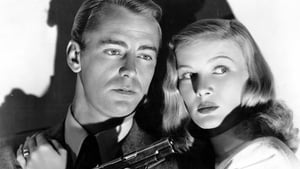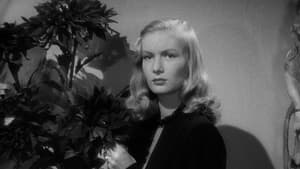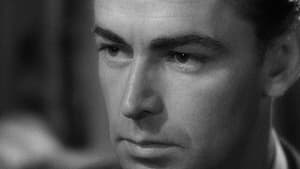Video Sources 0 Views
- The Blue Dahlia 1946 Colorized

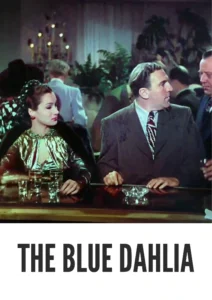
Synopsis
Table of Contents
Toggle
Dive into the shadowy world of post-war Los Angeles with The Blue Dahlia, a gripping film noir drama from 1946, now beautifully colorized for a mesmerizing viewing experience. Starring Alan Ladd and Veronica Lake, this film, directed by George Marshall, weaves a complex tale of suspicion, murder, and the allure of a mysterious woman. Perfect for fans of classic thrillers and those captivated by the dark beauty of film noir, this HD download brings a timeless piece of cinematic history to your screen. Some sources list the alternative title The Blue Marionette.
The Blue Dahlia tells the story of Johnny Morrison (Alan Ladd), a Navy veteran returning home from World War II to his unfaithful wife, Helen (Doris Dowling). Johnny arrives to find Helen in the company of Eddie Harwood (Howard Da Silva), a nightclub owner with shady connections. A heated argument ensues, and Johnny leaves the house. The next morning, Helen is found murdered, and suspicion immediately falls on Johnny.As Johnny tries to clear his name, he becomes entangled with Joyce Harwood (Veronica Lake), Eddie’s estranged wife, who may hold the key to unraveling the mystery. Together, they navigate a treacherous landscape of deceit and danger, encountering a colorful cast of characters along the way. Johnny must evade the police while piecing together the truth behind Helen’s murder, uncovering a web of secrets and betrayals that lead to a shocking climax. The Blue Dahlia is a suspenseful and atmospheric thriller that captures the essence of film noir.
The Blue Dahlia boasts a stellar cast of actors who bring this suspenseful story to life:
- Alan Ladd as Johnny Morrison
- Veronica Lake as Joyce Harwood
- William Bendix as Buzz Wanchek
- Howard Da Silva as Eddie Harwood
- Doris Dowling as Helen Morrison
The Blue Dahlia is a quintessential example of film noir, characterized by its dark and cynical tone, shadowy cinematography, and morally ambiguous characters. The film combines elements of mystery, crime, and romance, creating a captivating and suspenseful viewing experience. The term “blue dahlia” is a rare and beautiful flower.
Released in 1946, The Blue Dahlia reflects the anxieties and uncertainties of post-World War II America. The film explores themes of disillusionment, betrayal, and the psychological scars of war, which were common in film noir productions of the era. The film’s stylish visuals, sharp dialogue, and complex plot elements contributed to the genre’s popularity and lasting influence on filmmaking. The screenplay was written by Raymond Chandler.
This colorized version of The Blue Dahlia has been meticulously restored using modern digital techniques, enhancing the visual appeal while preserving the film’s original atmosphere of mystery and suspense. The colorization process involved carefully analyzing the grayscale tones of the original black and white footage and assigning appropriate colors to each scene. While the specific software used remains proprietary, the techniques employed included advanced algorithms for color palette selection and image enhancement. This painstaking process brings new life to the characters and settings, making the story even more engaging for modern audiences. While some may debate the merits of colorizing classic films, it introduces these films to a broader audience, ensuring their legacy for future generations.
- : George Marshall
- : Raymond Chandler
- : Lionel Lindon
- : Arthur Arthur
- : Paramount Pictures
- : Paramount Pictures
- : 99 minutes
- : MP4
- : HD (1080p)
- : Compatible with most devices, including smartphones, tablets, computers, and smart TVs.
The Blue Dahlia (1946) is a highly regarded film noir classic, praised for its atmospheric cinematography, sharp dialogue, and compelling performances. The film’s intricate plot and memorable characters have made it a favorite among fans of the genre. As a prime example of film noir, The Blue Dahlia continues to captivate audiences with its timeless themes and stylish visuals.
- : What is The Blue Dahlia about?
- A: The Blue Dahlia is a film noir about a Navy veteran who becomes a suspect in his wife’s murder and teams up with a mysterious woman to clear his name.
- : Is The Blue Dahlia (1946) a well-known film noir?
- A: The Blue Dahlia is a highly regarded and popular film noir, known for its stylish visuals and complex plot.
- : Is this version of The Blue Dahlia colorized?
- A: Yes, this version has been professionally colorized to enhance the viewing experience.
- : What makes The Blue Dahlia interesting for film noir fans?
- A: The Blue Dahlia offers a prime example of the genre’s themes, visuals, and storytelling techniques, making it a must-see for fans of film noir.
- : What is the download format?
- A: The download format is MP4, which is compatible with most devices.
- : What resolution is the download?
- A: The resolution is HD (1080p), providing a high-quality viewing experience.
Watch The Blue Dahlia Today!

